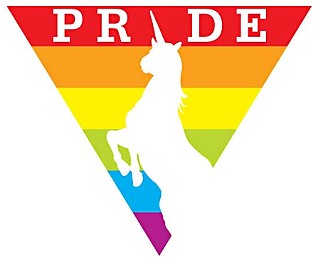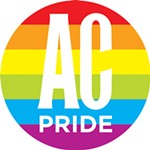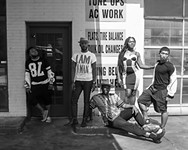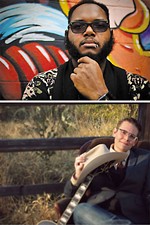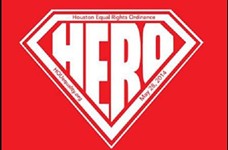Parades Go By
The history of the rainbow lineup rolls forward into the spectrum of Austin Pride 2012
By Andy Campbell, Fri., Sept. 21, 2012
There is great power in people coming together and showing solidarity across a variety of differences. What greater visible display of the LGBTQ community in celebration is there than the pride parade? What some people dismiss as the "alphabet soup" of queer identities is essentially represented throughout the course of these parades. Here are the Dykes on Bikes. There are the twinkie go-go boys, and PFLAG, and Out Youth, and Wells Fargo's LGBTQIA contingent – all of them proud to be marching down Congress Avenue.
But the first pride parades weren't about pride. Rather, they were about visualizing feelings of anger, love, and grief. They were about liberation through visibility.
The first pride parades were held on the June anniversary of the 1969 Stonewall riots, and were largely unorganized and unsanctioned marches down the streets of New York, Los Angeles, and Chicago. By the 1980s and '90s, there was a paradigm shift. Most parades reorganized under the banner of "pride" instead of "liberation" or "freedom." Pride became a tricky thing. Not all queer folks were a welcome presence at pride parades. Not all queers were even proud of other queers.
The 1978 San Francisco Gay Freedom Day Parade is an emblematic example, in part because it was during this parade that Gilbert Baker's two rainbow flags were unfurled for the first time. Far from being a small in-group event, home video from the parade (available on San Francisco's GLBT Historical Society YouTube page) shows Baker's flags flanking the parade route, and thousands of people walking and crowding the sidelines. This home-video footage also shows that the pervasive political statement that year was the anti-Briggs Initiative, a proposition following in the wake of Anita Bryant's success in Florida in restricting gays and lesbians from being educators. Many marchers hold placards skewering Anita Bryant – telling her to "Go suck an orange!" People dance in the street and on the sidewalks, mug for the camera, shuffle their feet along in boredom.
But, even at this moment of great political galvanization, there were those who felt conflicted. Indeed, femme theorist and activist Amber Hollibaugh – who extolls her desire for stone butch women – wrote of the 1978 parade:
It was 1978. The Gay Pride March that year in San Francisco was a passionate testament against Anita Bryant and the loss of an important gay rights initiative in Dade County, Florida. It was a reply to the frightening wave of antigay politics sweeping the country. People were at that march in defiance, protest, mobilization. It galvanized gay resistance. I was proud to be a part of it that year, angry and defiant about all the homophobia surrounding us. I was also full of inarticulate grief. The fundamental importance of gay liberation was unequivocally clear to me. But my desires, the ways I felt and expressed my own queer femme sexuality, now positioned me outside the rights I was marching to defend. My internal erotic identity made me an alien to the politics of my own movement – a movement I had helped start, a movement whose survival and growth I was committed to.
Hollibaugh's complicated feelings of identification and disidentification – at once joined in rage and political action, and also outside the politics of the "movement" – are represented as an internal process. But it could very well also describe the very literal place accorded to leathermen and leatherwomen marching in the very same parade. Their place in the lineup was very interesting.
A parade, as a visual and physical performance, depends on the good faith, health, and energy of its spectators, wearing them out the longer it rolls on. Placing more "important" groups early on capitalizes on the high expectations and interest from viewers. It's clear from the first 10 groups that importance is doled out to those marching in the beginning and not the end of the parade. The first slots were relegated to the organizers and local political heroes (e.g., Harvey Milk).
While leather groups were not totally absent from the Freedom Day Parade itself, the marching order tells a story of marginalization. In a parade, someone has to come in last place, and in the 1978 San Francisco Gay Freedom Day Parade it was leatherfolks. Out of 138 floats and marching contingents, only six were directly related to leather clubs, bars, and communities. All of these groups are relegated to position 130 and after.
The following year, in the cover article for the The Advocate, columnist Pat Califia confirmed that exclusion was part of the political message of the parade. She states "The Gay Freedom Day Parade Committee tried to pass a resolution that would bar leather and S/M regalia from the parade," effectively excluding leatherfolks who wanted to be visible in their leather attire. Elsewhere, Califia wrote that she and other leatherwomen at the 1978 Gay Freedom Day Parade "got a lot of shit from gays of all sexualities who thought that in the Year of Briggs we should all come to the parade in pinstripe suits and polyester pantsuits." The overriding narrative of the Gay Freedom Day Parade, in Califia's view, was one of tacitly enforced normalization ("suits" and "pantsuits"), and an unabashed hatred for those who fell outside of this political stratagem.
In 2010, Austin had a similar problem when the AGLPF stressed the importance of being inoffensive and rebuffed queer mainstay Sandra Bernhard for being "too vulgar for a family-friendly event." In the same way that leatherfolks were asked to march in the back of the parade, LGBTQIA folks of all kinds were made to feel excluded by a policing of their behavior. Pride is only pride when it confirms what one may think about themselves, not what others think about someone. The invective – "Be proud!" – makes little sense because this is an internal and individual process, paraded for one carnivalesque day as though it were in fact an external one. But shame, while it can also be internally focused, comes from making sense of someone else's normal.
The AGLPF's normal in 2010 was damaging, not just for individuals who felt excluded, but for LGBTQIA communities at large which attended the parade and festival in low numbers relative to the increasing numbers that had characterized Austin Pride in the latter half of the 2000s – perhaps contributing to the financial woes which followed for the administrators of the AGLPF (see "Don't Call It a Comeback," p.56).
But that has started to change in substantive ways. Current president of the AGLPF Paul Huddleston, who joined the board last year, identifies that the fallout from 2010 is still strong. There was, "a lot of disheartenment with rules of the parade. For example, that women needed to wear tops. When I started at AGLPF, I got that question quite a bit: What can/can't I wear? I want you to wear what makes you proud. If it's pasties and a thong, have at it!" Huddleston adds: "The Pride parade is the culmination of Pride festivities. It celebrates who we are. It brings awareness to different organizations and groups. And foremost it's about coming together and celebrating. We want to bring the community together."
Because of the toxic rhetoric of the 2010 AGLPF, and the exorbitant costs for nonprofits to march (another thing that the current AGLPF under Huddleston moved to rectify), the 2010 Austin Pride Parade saw only a measly 50 marching contingents. Last year, despite an unpopular move to the morning, that number climbed to 76, and this year, Huddleston expects around 100. Huddleston and the AGLPF also moved the parade back to evening hours for 2012, hoping to attract even more participants and the throngs of spectators that the annual Austin Pride Parade had come to enjoy.
These may seem like small changes, and in some ways they are – Pride is still sponsored by corporations (and the festival is still not free) – yet they are impactful, if only because they move to change the rhetoric around the ways in which "community," as a key term, has been deployed by official Pride organizing bodies.
And what about that most visible of performance forms, the parade itself? Huddleston claims that the order of the 2012 parade is more practical than anything else: "We have to structure the order pretty well to space out the floats, so there's an even flow to the parade. As part of the application, we asked questions regarding whether a group wanted to be in the front, middle, or rear, and so there's little political rhyme or reason as to who is first or who is last. And the order will be fluid until the day before."
When standing at the sidelines of this year's parade, pay attention to who is first and last. Hopefully, they'll want to be exactly where they are. Even being last has its advantages. While leatherfolks marching in the 1978 San Francisco parade weren't last by choice, they had a unique opportunity as the de facto bridge between parade participants and street viewers, who would often join in at the back of the parade. As street viewers joined the parade it was leatherfolks, not Harvey Milk, who in the murky place between official parade lineup and improvisatory enlistment became the head of the people's parade. The rear-ended leather groups, thus, were in a position to build, if only temporarily, a community inclusive of difference.
Andy Campbell is a regular contributor to the Arts section and the Gay Place blog. He is a senior lecturer in art history at Texas State University, and writes about 1970s gay and lesbian leather communities.





